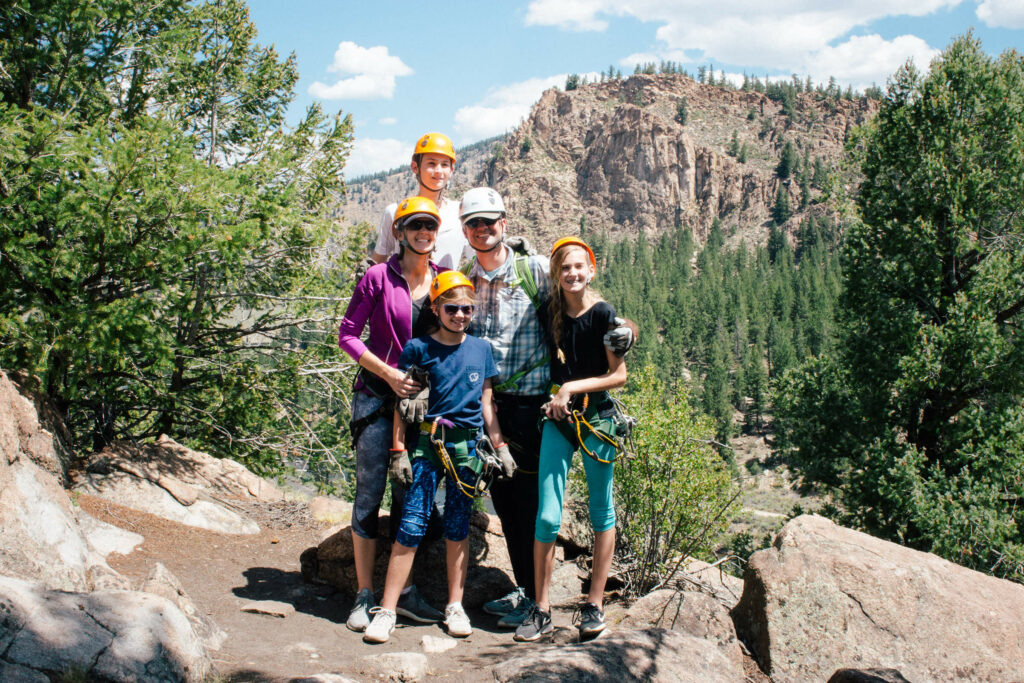What is a Via Ferrata?
A Via Ferrata combines aspects of climbing and hiking in order to create a new and unique way to traverse mountainous terrain. The first Via Ferratas originated in Italy during World War One so that soldiers could travel the Dolomite mountain range. To this day, many of these historical Via Ferratas have been maintained and can be climbed throughout Italy. Directly translated, Via Ferrata means ‘Iron Road’ in Italian. Via Ferrata courses involve iron rebar steps and a steel cable that guests will be fastened to. Most sections involve scaling sideways along the rebar steps and steps cut into the side of the mountain, with some sections involving climbing up iron rungs as well. The best part about participating in a Via Ferrata is that no climbing experience is necessary. In addition, here at AVA, our courses also involve a couple of zip lines as well.
Gear We Provide for the Via Ferrata
AVA Rafting & Zipline provides all the necessary equipment needed to complete a Via Ferrata course, which is included in the price. This includes a climbing harness, helmet, gloves, and special lanyards that fasten onto the steel cable. Guests will be fitted to the proper sized harness and our guides will help you adjust them accordingly. Additionally, many of our helmets have go pro mounts that previous customers have attached to them in the past. You are welcome to bring your own mount as well. On certain dates we also offer a twilight Via Ferrata. For this trip, head lamps and glow sticks are also provided. These are needed to keep track of all members of the group and see where you are going on the course
What You Should Bring for the Via Ferrata
Our Via Ferrata courses are quite exposed to sunlight and exist at high elevation. The combination of these two factors means that sunglasses and sun screen will be essential, as 2-3 hours of exposure will almost certainly strain your eyes and burn you skin without the two. Furthermore, closed toed shoes are a must. Due to the rocky nature of the course, sandals could result in cut up feet, and flip flops or crocs will fall off your feet (and could result in a fall on the course). Athletic, weather appropriate clothing is also suggested. A Via Ferrata will require some flexibility and a good range of movement, so ensure that whatever you are wearing allows for this.
What You Should NOT Bring
A Via Ferrata will require the use of both hands during the entirety of the course. It is not recommended to bring along water or a backpack, as you will not have hands to hold water and a backpack will through you off balance when climbing. Cell phones and cameras are also not recommended. You may drop one of these, and AVA cannot be held responsible for this. We do, however, offer photography on site for our Via Ferrata courses, so pictures are still an option.
You’re all set! Book a Via Ferrata adventure today and challenge yourself along the cliffside above historic Idaho Springs or the Arkansas River Valley in Buena Vista.











